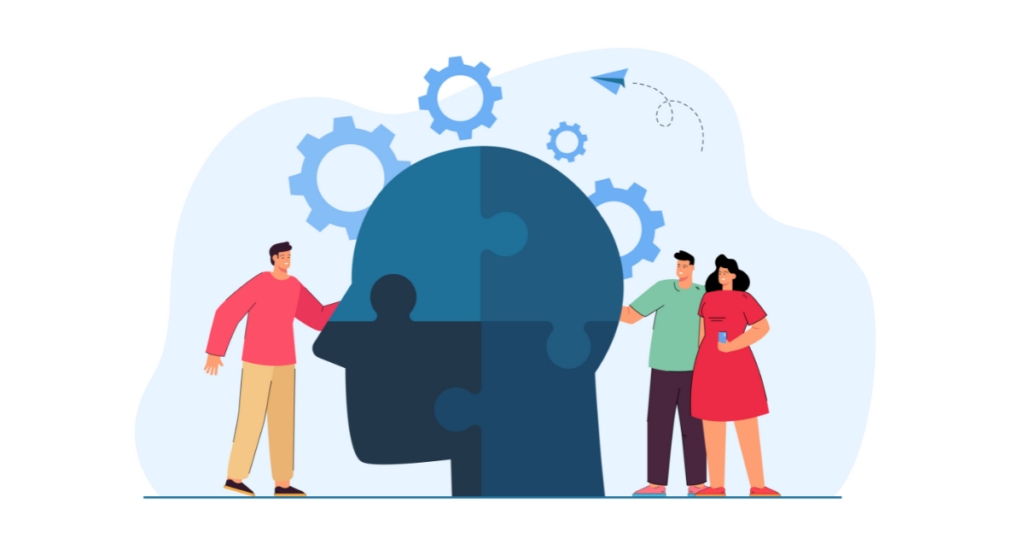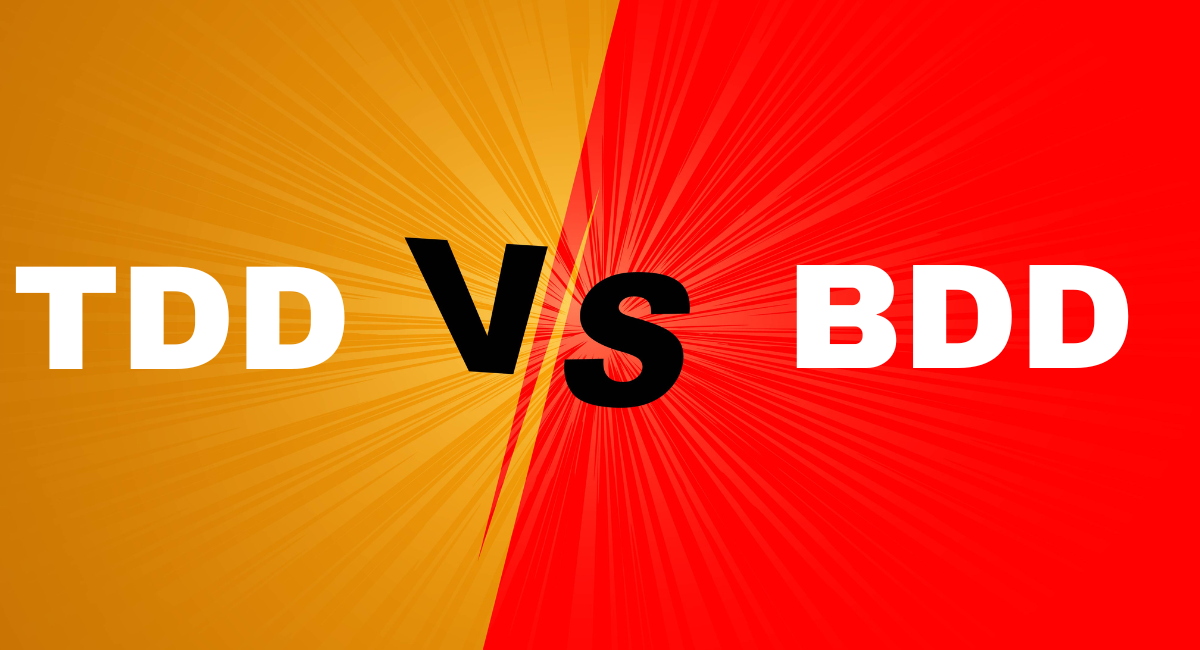Nowadays, error-free software creation is a major attribute of software development. Two significant methodologies, which solemnly drive the developer and the team towards writing software for not only the required purpose but also ensure its robustness and reliability, are the following: TDD and BDD.
This comparison will cover the methodology behind TDD and BDD, their processes, special pros, typical scenarios for use, and how they integrate with modern development workflows.
Similar to TDD vs BDD, we are talking not about different test techniques but looking through fundamentally different approaches toward software development.
While TDD is a technique whereby tests are written prior to the code so that each increment of the software fulfills some specific aspect of the test, BDD takes it a notch higher to involve non-technical stakeholders in the testing process through natural language specifications.
While both methodologies are meant to enhance the quality of software, what separates them from one another classifications is considerably different in approach and execution we will uncover this in this blog.
Understanding TDD vs BDD: Test-Driven Development and Behavior-Driven Development

What is Test-Driven Development (TDD)?
Well, Test-Driven Development, most commonly known as TDD, is a way of developing software in which tests are written before production code. First, define a test based on the next bit of functionality you want to add.
It starts by writing a test that will initially fail because the functionality has not been implemented, then proceeds with the production code, which makes the test pass, and at the very end, new code is refactored as needed.
This process, the Red-Green-Refactor cycle, supports the ethos of having something working before getting a design or the perfect structure of code.
What is Behavior-Driven Development (BDD)?
Behavior-Driven Development (BDD) provides a further extension of the concepts of TDD in favor of more behavioral aspects related to the software.
BDD works by bringing closer collaboration among developers, QA teams, and nontechnical stakeholders through a common language in describing how an application should behave.
The process initiates with the definition of user stories and acceptance criteria. These criteria are turned into a specific format of automated tests.
BDD tools such as Cucumber or SpecFlow parse these tests, which describe the behavior of the application in a language like Gherkin, readable to all team members.
Key differences between TDD and BDD
- Purpose and Focus: In TDD, functionality and correctness of the unit of code are taken as the focus; on the other hand, in BDD, application behavior and end-user experience form the target.
- Level: TDD is normally followed at the unit testing level. BDD occupies a level higher in the testing pyramid, which means acceptance testing.
- Language Used: TDD tests would be written in the same programming language as that used for coding, whereas BDD uses natural-language-like constructs; therefore, they are easier to read and share.
- Stakeholder Involvement: This directly involves a business stakeholder, giving him the opportunity to be part of the definition of expected behavior something not traditionally done in TDD.
Benefits of TDD and BDD in Software Testing

Benefits of Test-Driven Development (TDD)
The primary benefits of practicing Test-Driven Development include:
- Improved code quality: TDD reduces the likelihood of bugs and enhances code stability.
- Enhanced focus: Developers concentrate on requirements before writing code ensuring that the software is built strictly according to specification.
- Facilitates change: With the safety net of tests, developers are more confident in improving or refactoring code without breaking existing functionalities.
Benefits of Behavior-Driven Development (BDD)
Behavior-Driven Development offers several unique advantages:
- Better team communication: The use of natural language makes the development process more inclusive for QA teams, developers, and stakeholders.
- Enhanced user satisfaction: BDD’s focus on user behaviors leads to features that better match user expectations.
- Reduces misinterpretation: By defining acceptance criteria upfront and in a clearly understandable format, BDD minimizes the risks of misalignment between developed features and stakeholders' requirements.
Comparative analysis of the benefits of TDD and BDD
While both methodologies aim to enhance software quality, their benefits complement each other:
- Where TDD facilitates detailed verification of criteria and functionalities at a technical and unit level, BDD broadens the scope to ensure the software meets the overall business and user needs.
- TDD is excellent for developers who need to ensure that every piece of code is tested before integration, while BDD is better suited for projects where the clarity of feature behavior is crucial from a business perspective.
- Ultimately, integrating both TDD and BDD can provide a comprehensive coverage in testing, bridging the gap between technical requirements and business expectations.
ContextQA Tools and Techniques
Introduction to ContextQA
ContextQA refers to the tools and techniques used in software testing that focus on understanding and evaluating the software within the context of its real-world use.
It combines methodologies from behavior-driven (BQQ) and test-driven development (TDD) to create a more comprehensive testing framework.
This approach aims to bridge the gap between technical specifications, user expectations, and market requirements by focusing on the context in which the software operates.
How ContextQA tools can enhance the testing process
ContextQA tools, by integrating principles of both BDD and TDD, enhance the testing process by ensuring that software applications not only meet their technical requirements but also fulfill user needs effectively. These tools help in:
- Clearer understanding of user requirements through user stories and scenarios.
- Improved communication among stakeholders, including developers, testers, and business representatives.
- Reduction of ambiguities by discussing and fleshing out contexts before actual implementation begins.
- Earlier detection of issues and mismatches in user expectations, which reduces later rework.
Examples of ContextQA techniques in TDD and BDD
In TDD, ContextQA techniques can include the use of detailed, real-world user scenarios during the test creation phase. For instance, rather than just testing whether a function returns a value, testers would check whether that value is consistent with what would be expected in a real-world scenario.
In BDD, ContextQA often involves using conversational language to define tests, which ensures everyone involved has a clear understanding of the context.
Techniques like role-playing to walk through user scenarios can help teams visualize end-user interactions with the software, ensuring the tests cover right user expectations and behaviors.
Implementation and Best Practices
Tips for implementing TDD effectively
- Start by clearly understanding and defining the expected outcome before writing any code.
- Write small, incremental tests to guide the feature development.
- Continuously refine and refactor code as new tests bring up scenarios, ensuring the codebase remains clean and adaptable.
- Utilize pair programming to enhance team knowledge and code quality.
Best practices for incorporating BDD into your testing strategy
- Involve all stakeholders in defining acceptance criteria using Ubiquitous Language to ensure clarity and consistency.
- Regularly review and revise feature files to keep up with changes in user requirements and market conditions.
- Use automation frameworks compatible with BDD approaches, such as Cucumber or SpecFlow, to execute feature files.
- Focus on continuous communication and feedback within the team to adapt and pivot as necessary for meeting user expectations.
By employing these techniques and adhering to these practices, user acceptance of software products can be greatly enhanced, ensuring a robust final product that aligns closely with both user needs and business goals.
Real-world Case Studies
Case study demonstrating successful TDD implementation
A notable example of Test-Driven Development (TDD) is the transformation in the development process at a well-known financial services company.
Initially struggling with frequent system outages and bugs, the company adopted a rigorous Tolang-style text that compares two items focusing on differences (TDD) methodology.
The process began by writing automated tests for each new feature before the actual feature development started. This shift not only facilitated early identification and resolution of bugs but also aligned developers' focus towards delivering functional, high-quality code.
Following TDD principles, the company reported a 40% reduction in its bug rates and a noticeable improvement in code maintainable.
The successful implementation of TDD enabled quicker release cycles and improved customer satisfaction, illustrating the direct benefits of adopting this software development methodology.
Case study showcasing effective use of BDD in software testing
In contrast, a major e-commerce platform exemplifies the successful application of Behavior-Driven Development (BDD).
The company integrated BDD to bridge the communication gap between developers, testers, and non-technical stakeholders involving them in the process from the start.
By using natural language to write scenarios that describe user behavior and expected outcomes, BDD helped everyone understand the project requirements clearly.
This collaborative approach led to the development of features that closely aligned with customer needs and expectations. As a result, the e-commerce platform saw a 30% faster time to market and enhanced user satisfaction scores.
BDD’s emphasis on end-user experience proved critical in tailoring functionalities that met actual user demands, demonstrating the tangible benefits of this method in real-world software development.
Book a Demo and experience ContextQA testing platform in action with a complimentary, no-obligation session tailored to your business needs.
Conclusion
Recap of key differences between TDD and BDD
While TDD and BDD both try to raise the level of quality in regard to development through introducing testing earlier in the process, how they do so tries to affect the development in quite different aspects.
TDD services the functionality of units of code, requiring a developer to write tests for each function prior to the actual code. BDD targets the behavior of the software from a user's perspective, actually being about collaboration and communication.
Importance of choosing the right approach for your software testing needs
Choosing between TDD and BDD ultimately depends on the specific needs of your project and team structure:
- TDD is ideal if technical precision and detailed validation of each unit are critical.
- BDD works best when the product's behavior and seamless communication among team members, including non-developers, are priorities.
Understanding your project's requirements and team dynamic is crucial in determining the most effective testing strategy to facilitate development and achieve quality outcomes.
Encouragement for exploring how ContextQA tools can improve your testing processes.
Exploring advanced ContextQA tools can significantly bolster your testing strategy, whether you lean towards TDD, BDD, or a combination of both.
These tools help in replicating and troubleshooting specific contexts, making your tests more robust and reflective of real user environments.
Thus, investing time in understanding and integrating ContextQA tools into your processes is highly recommended to enhance the efficiency and accuracy of your testing efforts.
Also Read - Top 15 Best Performance Testing Tools For Your Team
